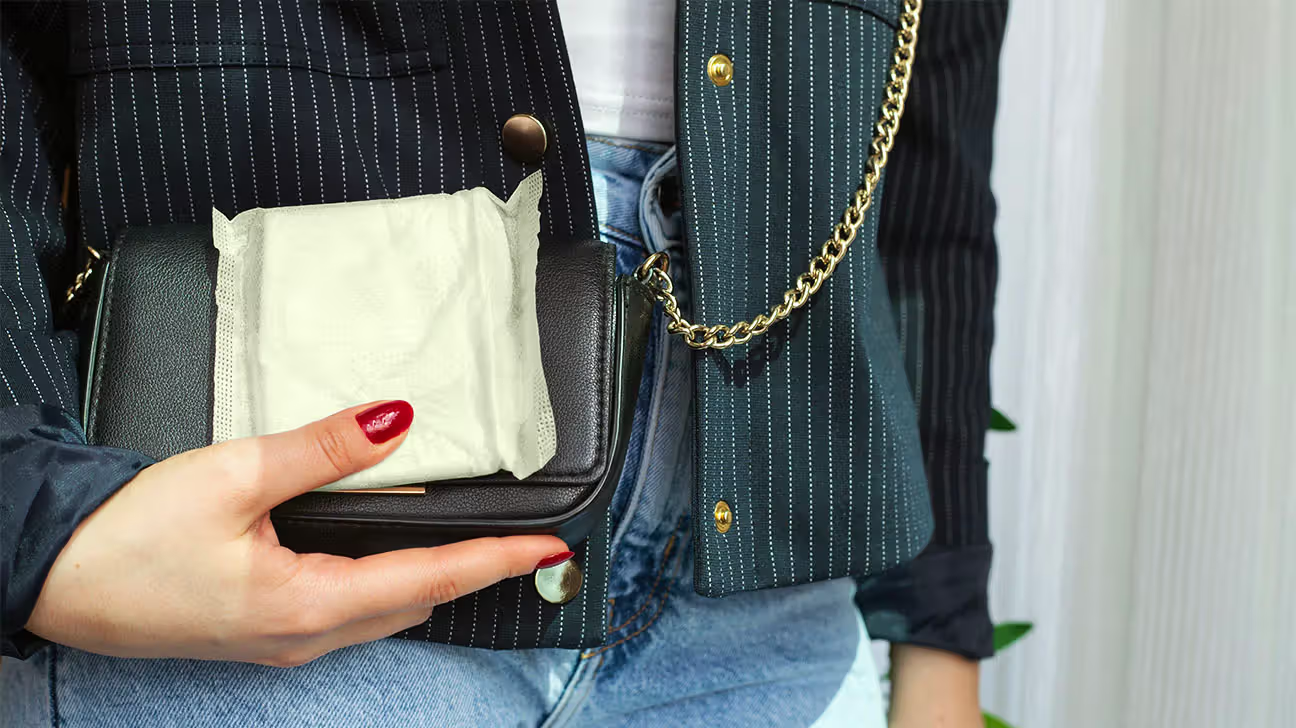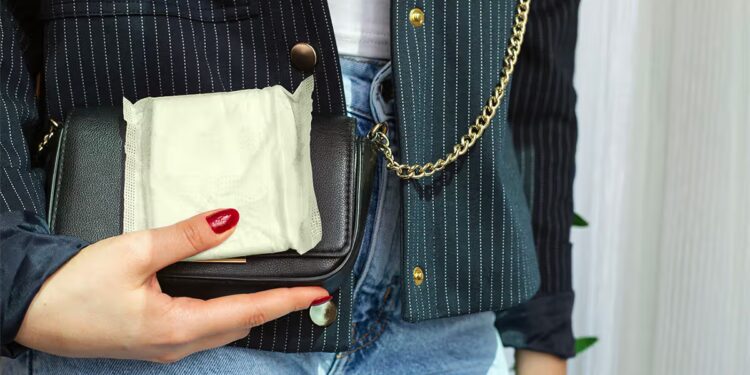
- Some TikTok and social media users have posted images and videos of dark, spotted patches inside unused pads, sparking concerns around potential mold contamination.
- Health experts say this discoloration is more likely due to harmless materials or storage conditions rather than mold.
- Research has shown very low microbial levels in unused menstrual products, with no findings linked to health risks.
- Manufacturing standards and proper storage help keep pads safe, but you should discontinue use if there is visible damage or mold growth.
There’s a wave of concern sweeping social media: users are holding up brand-new, sealed menstrual pads and spotting dark, splotchy areas that look alarmingly like mold.
In a viral TikTok video, an unused sanitary pad was held up to the light and appeared to show fungal growth inside.
But are these dark spots actually dangerous contamination or simply harmless absorbent materials?
Some say the discoloration is fibers that soak up blood, while others have raised concerns about manufacturing and hygiene.
We looked at existing reesearch on this topic and asked medical experts about the possible causes of these dark spots, the risks associated with mold in sanitary pads, and what you can do to ensure the safety of your period products.
Experts can’t say for certain what these dark spots found in some period products could be.
“While it’s difficult to confirm exactly what’s inside the product, the material appears to have dark discoloration that could be consistent with mold,” said Monica Williams, MD, physician and co-founder of Scarlet by RedDrop, a puberty care brand for tweens and teens.
“This could be the result of mishandling, exposure to moisture, or expiration, rather than a reflection of standard manufacturing quality,” Williams told Healthline.
Typically, menstrual pads are manufactured in clean, controlled environments. They’re also sealed to prevent contamination.
“However, if a product is stored in a damp location, exposed to heat or humidity, or damaged in transit, organic materials could degrade or develop growth over time,” Williams said.
Importantly, she said, if this were to happen, the issue would likely be isolated and environmental, and not inherent to pads in general or to any one brand.
Deborah Lee, a general practitioner in the United Kingdom and specialist in sexual and reproductive healthcare and menopause at Dr. Fox Online Pharmacy, said the dark spots some social media users are reporting in their period products may be linked to the materials from which they’re made.
“When you hold an unused period pad up to the light, it can look dark and splotchy in places because of the superabsorbent polymers (SAP) that make up the inner absorbent layer,” she told Healthline.
SAP, a common material used in sanitary pads to absorb moisture, is a 3D hydrophilic material that can absorb and retain liquids. “[SAP] absorbs blue light and reflects yellow light, meaning the pad may naturally appear to contain darker areas when held up to the light,” Lee explained.
While one 2018 study examined unused tampons for microbial presence, there is very limited equivalent research on unused pads. A 2021 study of sanitary pads in Nigeria, stored under various conditions, found contamination emerging after 24 hours when the packages were left open, unsealed, or improperly stored.
Additionally, a 2023 study of various brands of pads also found bacterial and fungal isolates in some market-sold samples.
Although data on hygiene in sanitary pads is limited, current evidence suggests that the overall risk remains low, especially for properly sealed products.
It might help put your mind at ease to know how period products are manufactured.
Manufacturers select raw materials for period products with
Production typically occurs on automated lines that assemble the product layers (top cover, absorbent core, acquisition or distribution layers, and backsheet) and then fold and seal them in individual wrappers or packs.
Factories that supply regulated medical devices or device components typically follow quality control systems and hygienic practices designed to minimize contamination.
Finished goods are typically stored in dry, climate-controlled warehouses and tested by manufacturers for performance measures such as absorbency and structural integrity.
In short, manufacturers generally design processes to limit contamination and verify basic product performance; however, regulatory requirements and labeling for menstrual products vary by product and location.
Are there harmless components within pads, such as adhesives, dyes, or recycled fibers, that could appear like dark spots or discoloration when light shines through them?
According to Williams, the answer is yes.
“Plausible explanations for what people sometimes perceive as mold would include absorbent pulp fibers, adhesive strips or release paper, and backing or outer film irregularities,” Williams said.
“Many non-hazardous components can appear unusual when examined under atypical conditions, such as being held up to an intense bright light, and can be mistaken for contamination, when in fact they are part of the product design or material construction,” she noted.
If mold were present in a menstrual product, you might wonder about the health risks associated with its use.
Potential health risks would generally be limited to skin irritation, contact dermatitis, or allergic reactions.
People with weakened immune systems may be at a higher risk of more serious infections from environmental molds, although this is rare.
Lee explained that the vaginal region has its own microbiome containing live bacteria and fungi, such as Candida albicans. Exposure to other bacteria may lead to imbalances in the vaginal microbiome.
“Your immune system and the presence of other bacteria keep this under control. It’s only when something happens to upset this balance, and the yeast starts to reproduce, that you start to get symptoms such as soreness, discharge, and itching.”
You can minimize your risk of exposure to outside bacteria by changing your pad regularly. Lee recommended changing your pad every 4–8 hours, and more often if your flow is heavy.
Source link : https://www.healthline.com/health-news/unused-period-pads-mold-contamination-debunked
Author :
Publish date : 2025-11-01 07:01:00
Copyright for syndicated content belongs to the linked Source.













